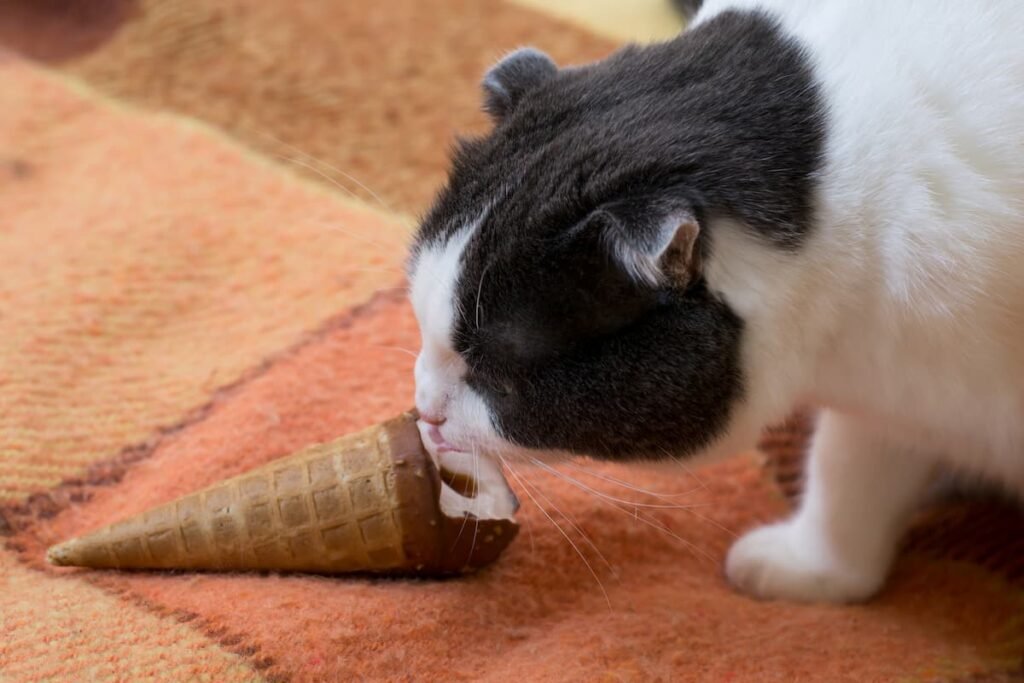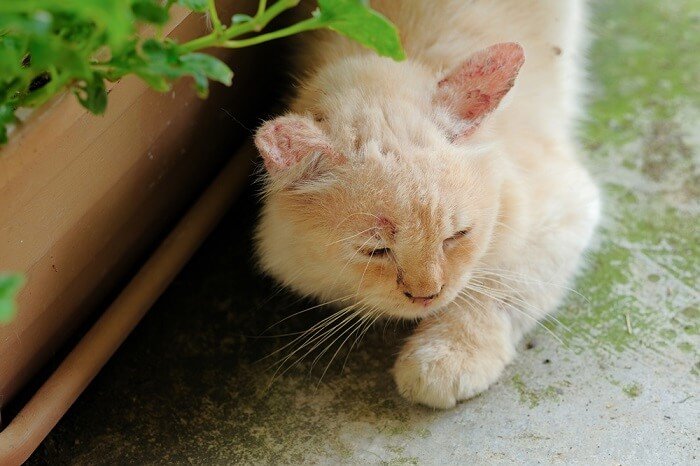Don’t be fooled by our cats’ cute, diminutive noses; don’t be deceived into thinking their sense of smell is weaker than ours (14 times stronger!) This fact was surprising even to them! Their ability to detect various scents is remarkable, with certain scents having particular appeal for our felines more than others.
Pet parents likely know of the various scents cats don’t enjoy, such as citrus or litter box odor. What are some scents cats enjoy, though? We have eight that they adore below as well as an overview of feline olfaction fundamentals.
Why Do Cats Have Such an Accurate Smell Sense? Its Cats possess an exceptional sense of smell with over 50-80 million cells that detect scent. In comparison, humans only possess five million such cells (2).
Felines possess a special organ for sensing scents called the Jacobson’s or vomeronasal organ, located on their mouth’s roof. This organ allows cats to detect specific pheromones beyond what their nose can detect and provide additional information that goes beyond what can be gathered through their sense of smell alone. When cats show the “Flehmen response,” an open-mouthed smile that intensifies scent perception, these molecules enter this organ through their tongue.
Cats depend on their scent sense to understand their surroundings, identify other felines, source food sources and detect threats such as predators or poisons in their environment. This harkens back to their beginnings as predators in nature.
Why Are Cats Attracted to Certain Smells? Cats tend to respond favorably to scents that mirror their needs such as food and security.
Cats have significantly smaller taste buds than humans — approximately 470 as opposed to 10,000 (1) — meaning they depend more heavily on scent when choosing which food to eat, according to Stephen Quandt, a certified feline behavior and training specialist and founder of Stephen Quandt Feline Behavior Associates.
Pheromones are chemical compounds produced by animals to communicate, and have a significant influence on cats’ preferences for scent. While not odorless to humans, their influence on animal behavior is profound – anything similar will appeal to cats.
When cats become attracted to scents, they will apply pressure directly to its source or roll their head over it before purring and trying to consume or indulging it; conversely if a scent doesn’t appeal, they tend to flee, retreat or show signs of disgust such as squirting their noses or shaking their heads in disgust.
While most cats prefer certain scents, not all react in the same way to each scent. Like people, who each have their own preferences and dislikes when it comes to scents, cats too have different preferences when it comes to scents they like and don’t like.
What Smells Do Cats Love? 8 Aromas That Attract Felines
Since scent is central to cat senses and communication experiences, it is vital that we provide them with a variety of attractive yet safe scents to explore and delight them with.
Quandt suggests that we can enrich indoor environments to satisfy a child’s natural curiosity, delight, and engagement with activities.
Let’s explore eight scents cats tend to favor and their appeal to our furry felines.

1. Catnip Catnip, an herb from the mint family, is widely recognized for its intoxicating effects on many cats. The reason behind this lies with nepetalactone’s ability to mimic feline pheromone molecules associated with mating behavior; cats that come under its influence display behaviors such as purring, rolling, rubbing and jumping before finally becoming aggressive towards other felines.
Quandt has explained that when cats come across nepetalactone it can be absorbed through their nasal tissue, binding with receptors responsible for sensory stimulation in their brains and producing an enjoyable yet non-toxic “high” lasting five-15 minutes.
Unbelievably, there are cats that become obsessed with catnip. Cats most sensitive to it may inherit it; one out of three cats does not share this genetic trait ( 3).
Catnip can be administered to cats via toy-filled toys or solid catnip balls filled with dried catnip, fresh plants or simply by scattering some on scratching posts, toys or any other objects around their environment.
Valerian Root Valerian root works similarly to catnip, creating an initial feeling of euphoria for cats before its effects subside and they return to normal levels, leaving cats relaxed and calmer afterwards.
Valerian root’s effects can be attributed to its active ingredient known as actinidine, similar to catnip in that it may stimulate receptors within cats’ brains which respond to cat pheromones.
Be wary of giving your cat valerian supplements; rather, use toys containing valerian roots or just a tiny amount of chopped dry roots as treats.
3. Vanilla

Many cats appear to enjoy the scent of vanilla. As such, certain medications and supplements such as Credelio Cat contain vanilla to attract selective cats.
CredelioCAT can be defined as an oral treatment for fleas and ticks that can be administered within 8 hours, stopping tick spread for months ( 4). The tablet is small and chewable – perfect for cat owners who find topical applications challenging; in a U.S. field study cat owners were able to administer CredelioCAT 99.5 percent of time while nearly 47 percent of cats took tablets when offered either directly, in an empty bowl on the floor, or along with food.
Purchase Prescriptions at Your Vet
*Prescription purchases require an office visit in the past 12 months in order to purchase prescription purchases.
4. Yeast

Have you noticed your cat sneakily trying to sneak bread bites off the table due to yeast? One study revealed cats preferred food items that contained yeast extract ( 6).
Cats may enjoy eating small portions of bread baked, though this should not become part of their regular diet. Make sure that any bread your give your cat doesn’t contain garlic-related toxins which could pose health hazards to them.
Credelio CAT’s oral tablets also contain yeast to entice our feline friends to consume this flea and tick medication.
*Prescription purchases require a visit to your vet within the last year for verification purposes.
5. Silver Vine

Matatabi, also known as Silvervine in Japan and China, often attracts cats with its pleasant fragrance that many find similar to that of catnip.
Quandt states that studies have revealed silver vine to be more toxic to cats than catnip, perhaps due to its additional chemicals such as actinidine, iridomyrmecin, and isodihydronepetalactone (3).
Silver vine can be found either as powder or sticks.
6. Olives
It may come as a surprise, but cats have an affinity for olives! Researchers speculate this attraction stems from isoprenoids found in olives resembling catnip’s chemical constituent, nepetalactone. Quandt.
If your cat enjoys the scent of olives, they may enjoy tasting one too. Give your feline at least once each week a small piece of an unripe olive (non-whole) that has been thoroughly washed to remove salt or any seasonings, while taking care to ensure any pit is removed as well as any salt residues.
7. Animal Protein Won’t Attract My Cat

Nothing appeals more strongly to many cats than the scent of fresh fish or meat, given that they are obligate carnivores who need meat for nutrition purposes.
Smelling fish or meat may cause cats to display behaviors such as lip licking, meowing and showing increased interest or alertness. Cats will frequently search for sources that emit their favorite scent, drawn by its attractive scent.
8. You! Pet owners might be taken aback to discover that among the scents cats adore most are those from humans!
“Cats create an aura of community by transmitting their scent to us, then taking up on us and applying it back,” according to Quandt. This signal that you belong in their “colony”, making you feel secure.
Quandt notes that cats can exchange scent by rubbing body parts containing social pheromones (cheeks, forehead, eyes and around their mouths) against objects in your home.
If your cat prefers sleeping on your clothing, they’re probably attracted by its scent and find comfort from it.
Understanding What Scents Cats Enjoy
Discovering which scents your cat likes can have a major impact on their lives and wellbeing, here are some strategies on how you can use this knowledge:
Create an inviting living environment Scent can be used to make cats feel secure, at peace, tranquil, and secure in certain circumstances. For instance, placing unwashed clothing into their carrier may help ease stress when traveling for visits to their veterinarian. Or you could try adding aromatherapy scents you love into a brand new bed or carrier to create more welcoming transitions and reduce stress levels during transition periods.
Help with Medication Administration Navigating the waters of feline medication administration can be difficult, yet certain products like Credelio CAT offer appealing scents or flavors to assist cats in taking their pills.
Enhancing Your Cat’s Play Silver vine, catnip and valerian root scents are an excellent way to encourage playing and exercise for optimal mental and physical well-being in cats. Sprinkling some of these tempting scents on scratching posts or toys may help encourage play, decrease boredom and reduce behaviors like scratching inappropriately.
Scents to Use in Cat Training Scents that appeal to your cat can be utilized in training to create positive reinforcement situations, for instance using catnip-sprayed toys or salmon treats as rewards after an effective training session.
